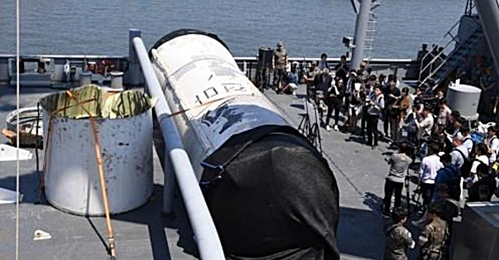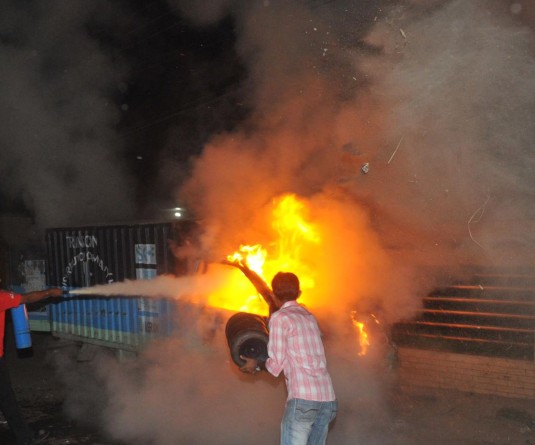IANS Photo

Seoul, July 5 (IANS): South Korea has retrieved a North Korean spy satellite wreckage and concluded it has "no military utility", ending a 36-day operation to salvage the sunken debris from the failed space rocket launch in late May, Seoul's military said on Wednesday.
The Joint Chiefs of Staff (JCS) said that the military raised key parts of the rocket and the satellite through the search and salvage operation in the Yellow Sea from May 31 through Wednesday, and it worked in tandem with the US to examine and analyse them, reports Yonhap News Agency.
"As a result of the exhaustive analysis by South Korean and US experts, we have assessed it has no military utility as a reconnaissance satellite," the JCS said in a press release.
The allies' joint analysis drew keen attention as it could shed light on the progress of the North's long-range rocket development and space programs, as well as which countries have wittingly or unwittingly aided its weapons development efforts.
The JCS did not detail the findings through the allies' analysis of the wreckage nor did it disclose any photos of the retrieved part of the satellite.
Last month, a Seoul official struck a cautious note, insinuating that disclosing all information the military gleaned from the salvage operation would rather benefit the North Korean military.
Since the rocket fell into the waters some 200 km west of the South Korean western island of Eocheong on May 31, the military had carried out the retrieval operation involving Navy ships, maritime aircraft and deep-sea divers.
The operation had been hindered by poor underwater visibility, fast currents, the heavy weight of the sunken wreckage and other challenges.
But it raised a presumed part of the rocket's second stage on June 15. The lifted part was around 12 meters long and 2 to 3 meters in diameter.
The North had claimed that the May 31 launch involved the new Chollima-1 rocket carrying the satellite, Malligyong-1.
Soon after the botched launch, the North's state media acknowledged the rocket crashed into the sea due to the abnormal starting of the second-stage engine.






